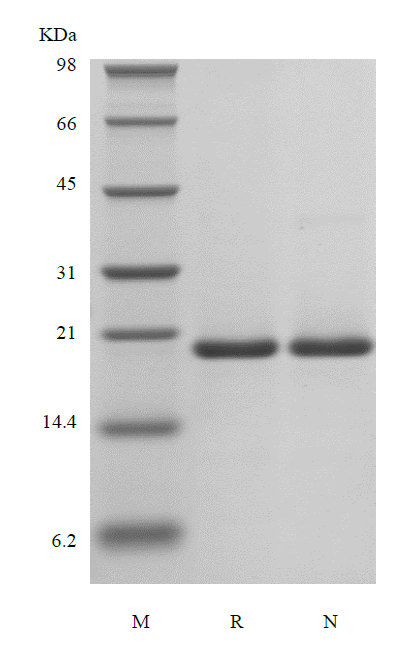Fibroblast growth factor 10 belongs to the fibroblast growth factor (FGF) family which is involved in a variety of biological processes such as embryonic development, cell growth, morphogenesis, tissue repair, tumor growth and invasion. Like most other FGF family members, FGF-10 also has a heparin-binding domain and it plays an important role in the regulation of embryonic development, cell proliferation and cell differentiation. In addition, FGF-10 may play a role in wound healing and is required for normal branching morphogenesis. Recombinant human FGF-10 contains a 208 amino acids and it shares 92 % and 95 % amino acid sequence identity with murine and rat FGF-10. Defects in FGF-10 are the cause of autosomal dominant aplasia of lacrimal and salivary glands and lacrimo-auriculo-dento-digital syndrome.

